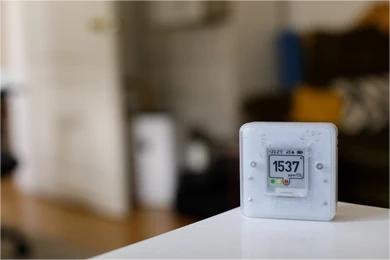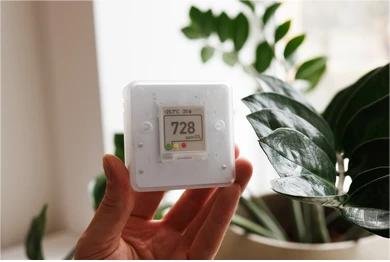When it comes to environmental monitoring and indoor air quality, one element that takes center stage is carbon dioxide. Understanding the levels of CO2 in our surroundings is crucial for a variety of reasons, from ensuring healthy living conditions to tracking climate change. In this blog, I'll delve into the world of carbon dioxide monitors and how they work to measure this essential gas.
The Importance of Measuring Carbon Dioxide
Before we explore the mechanics of carbon dioxide meters, let's first understand why measuring CO2 is so important. Carbon dioxide, a greenhouse gas, is a natural component of the Earth's atmosphere. However, in recent decades, human activities, such as burning fossil fuels and deforestation, have significantly increased its concentration.
The consequences of elevated CO2 levels are far-reaching. They contribute to global warming, climate change, and air pollution. In indoor environments, excessive CO2 levels can lead to discomfort, impaired cognitive function, and even health problems. That's why monitoring and managing carbon dioxide levels are critical.

How Carbon Dioxide is Measured by Carbon Dioxide Sensors
Carbon dioxide sensors, also known as CO2 sensors, CO2 monitors, or CO2 detectors, are devices designed to measure the concentration of carbon dioxide gas in the air. These sensors use various technologies to achieve this, but one of the most common methods is non-dispersive infrared (NDIR) technology. Here's how it works:
1. NDIR Technology
NDIR sensors operate on the principle that carbon dioxide molecules absorb specific wavelengths of infrared light. The sensor consists of an infrared light source, a gas sample chamber, and an infrared detector.
The infrared light source emits light that passes through the gas sample chamber, which contains the air to be analyzed. Carbon dioxide molecules in the air absorb certain wavelengths of the infrared light. The remaining light, which has not been absorbed by CO2, reaches the infrared detector. The detector measures the intensity of the transmitted light. The sensor calculates the concentration of CO2 based on the absorption of light. The more carbon dioxide in the air, the greater the absorption, resulting in a lower intensity of transmitted light. NDIR sensors are highly accurate and reliable, making them the go-to choice for carbon dioxide measurement in various applications, including industrial, environmental, and indoor air quality monitoring.

2. Chemical Sensors
Another type of carbon dioxide sensor uses chemical reactions to measure CO2 levels. These sensors typically contain an indicator that changes color in the presence of carbon dioxide. By measuring the color change, the sensor can estimate the concentration of CO2. While these sensors are simpler and more cost-effective, they are less accurate than NDIR sensors and may require frequent calibration.

Conclusion
In a world where carbon dioxide emissions have far-reaching consequences, monitoring CO2 levels is paramount. Carbon dioxide sensors, employing technologies like NDIR, enable us to accurately measure and analyze the concentration of CO2 in the atmosphere. Whether it's for environmental research, industrial processes, or maintaining healthy indoor air quality, these sensors play a vital role in helping us understand and address the challenges posed by rising CO2 levels. Don’t hesitate to contact us by filling out the form at your right.

